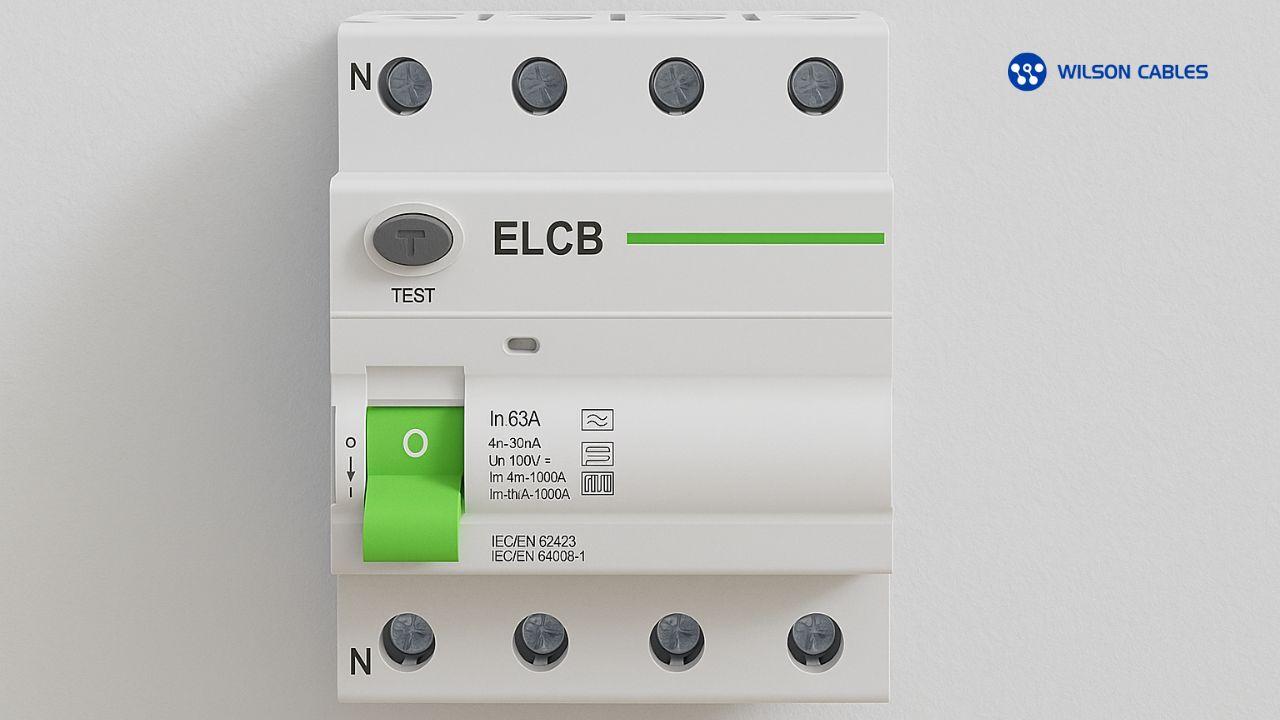
Electrical safety is a top priority in every home and building. One device designed to protect people from the dangers of electric shock calls are ELCBs (Earth Leakage Circuit Breakers). Many people have heard this term, but not everyone understands how it works, its functions, and its importance. This article will discuss ELCBs in detail, including their types, benefits, and proper installation.
An ELCB (Earth Leakage Circuit Breaker) is an electrical safety device designed to automatically cut off the flow of electricity when it detects a current leak to the ground. This current leak usually occurs due to damaged cable insulation, faulty electrical equipment, or installations that do not meet safety standards.
Here are some reasons why ELCBs are important to use:
ELCB plays an important role in maintaining the safety of electrical systems in homes and commercial buildings. Here are some of its main functions that you need to know:
The main function of an ELCB is to detect electrical current leakage flowing into the ground. This leakage usually occurs due to frayed cables, damaged equipment, or substandard installations. If the current leakage exceeds the specified threshold (usually 30 mA for human protection), then the ELCB will immediately cut off the power supply to prevent danger.
One of the most dangerous risks in electricity is electric shock, which can cause serious injury or even death. An ELCB can detect even the smallest current leakage and immediately cut off the current before it reaches the human body, thereby minimizing the risk of electric shock.
In addition to protecting humans, ELCBs also maintain the reliability of electrical installation systems. Undetected current leakage can cause excessive heat in cables or short circuits that can lead to fires. ELCBs help extend the life of cables and electrical equipment, while also avoiding losses due to damage by cutting off the current when leakage is detected.
ELCB works by detecting differences in electrical current between the phase and neutral conductors. Under normal conditions, the current flowing through the phase and the current returning through the neutral will be balanced or equal. This indicates that there is no current leakage.
However, if there is a current leakage to ground (e.g., due to a frayed cable or damaged electrical device), part of the current will flow out of the neutral path toward the ground. As a result, the currents in the phase and neutral become different.
The ELCB continuously monitors this difference. When the current difference exceeds a specified threshold, generally around 30 mA to protect humans from electric shock, the ELCB will automatically cut off the electricity supply. This mechanism aims to prevent the danger of electric shock and fire due to current leakage.
There are two main types of ELCB used, namely:
This type works by measuring the voltage between electrical equipment and the ground. If there is a current leakage to the ground, the voltage will increase and trigger the ELCB to cut off the electrical current.
This type works by measuring the current difference between the phase cable and the neutral cable. Under normal conditions, the current entering through the phase and returning through the neutral are equal. However, if there is a current leak to the ground, a current difference will be detected. When this difference exceeds the threshold (usually 30mA for human protection), the RCCB immediately cuts off the electricity supply to prevent danger.
ELCBs should be used in:
ELCB installation must be carried out by an experienced electrician to meet electrical safety standards. Installation errors can cause the ELCB to not function optimally or even fail to protect users from electric shock. Here are the correct installation steps:
Before starting the installation process, turn off the main MCB on the electrical panel of the house or building. This is very important to avoid the risk of dangerous electric shocks during installation. Don't forget to use a test pen to make sure there is no electricity flowing through the cables before working.
The ELCB is usually installed after the main MCB and before the electrical distribution line to the load (household appliances).
The correct panel sequence is: PLN meter → Main MCB → ELCB → Branch MCB → Load (appliances).
Cable connections must be made according to the input and output terminals on the ELCB:
The ELCB works by detecting leakage current to ground, so the grounding system must be installed correctly.
Ensure there is a ground rod or a good grounding system with low resistance (ideally < 5 Ohms). The ground cable must be connected to the electrical panel and protected household appliances.
After installation is complete, perform an initial test by pressing the TEST button on the ELCB.
If the ELCB trips (cuts off the power), it means the device is working properly. If it does not trip, check the cable connections and grounding again.
An ELCB is a very important electrical safety device. Installing an ELCB is not an option, but a necessity for every modern electrical installation, given its function of detecting current leakage and protecting people from electric shock. Ensure you choose the right type of ELCB and install it according to standards.